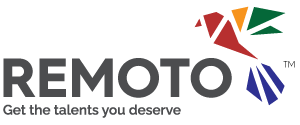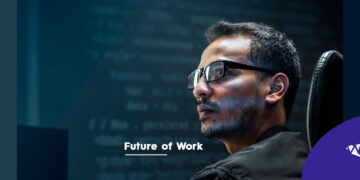As the workplace becomes more diverse, many organizations are faced with the challenge of leading a multigenerational workforce. A multigenerational workforce is defined as a group consisting of employees from different age groups: young, mid-career, and senior professionals.
The importance of learning how to lead this type of diverse team has become increasingly essential for success in today’s business world.
In this blog post, we’ll explore everything you need to know about integrating a multigenerational workforce into your company, the benefits it offers companies, and important tips for leading remote employees of varying ages.
From Boomers to Gen Z: Exploring the Diversity and Inclusion of Multigenerational Workforce
A multigenerational workforce adds value to an organization, benefiting from diverse experiences and perspectives. All generations in the workforce have different expectations, lifestyles, and beliefs that influence how they think about work.
Understanding the characteristics of each generation in the US job market and how they contribute to the workplace is essential to leading a diverse and inclusive team. This is why we delve into each generation category.
Baby Boomers Generation
Baby boomers are the oldest generation currently in the workforce, born between 1946 and 1964. They are known for being hard-working, dedicated, and loyal employees with solid work ethics.
Baby boomers tend to value job security and are loyal to their organizations. Although they have experienced significant technological advancements, they still prefer face-to-face communication over digital communication.
Generation X
Generation X, born between 1965 and 1980, are independent, self-sufficient, and adaptable employees. They grew up in a time of economic challenges, job instability, and rapid technological advancement.
As a result, Gen X is known for being resourceful and resilient and valuing flexibility, autonomy, and work-life balance. They are comfortable with digital communication and prefer a collaborative working environment.
Millennials
Born between 1981 and 1996, millennials are the largest workforce in the U.S. and globally. Their passion, creative intelligence, and fascination with the digital world are what they’re renowned for.
As digital natives, they are comfortable in a fast-paced, constantly evolving work environment. Similar to Generation X’s remote workers, they value a work culture that prioritizes flexibility and work-life balance rather than traditional office politics.
Generation Z
Representing the newest cohort in the workforce, Gen Z was born between 1997 and 2012. Like millennials, they are digital natives, growing up immersed in social media and mobile technology.
Gen Zers are widely praised for their authenticity, ambition, and autonomy. A flexible working arrangement that allows them to work remotely is highly sought after by them, as well as a workplace that embraces diversity and inclusion and promotes positivity.
If you’re curious about generations in the workplace, check out this fascinating TED talk!
Championing Diverse Perspectives: Why Your Multigenerational Workforce is a Strategic Advantage
Today’s workforce is incredibly diverse, especially when it comes to age. With five generations in the workplace, having a multigenerational workforce can bring many benefits to a company.
From boosting creativity and innovation to attracting and retaining top talent, here are some of the advantages of having a diverse workforce.
Boosts Creativity and Innovation
As we explained, a multigenerational workforce brings together different perspectives, experiences, and ideas that can help foster creativity and innovation.
Each generation has its own unique set of lessons learned and work styles that can be used to create new solutions for problems. Having multiple generations in the workplace also helps organizations stay up-to-date with current trends and technologies.
Attracts and Retains Top Talent
Having a multigenerational workforce can help attract top talent of all ages. It also helps organizations retain their best remote employees by creating an inclusive environment where everyone feels valued regardless of age or background.
This encourages remote employees to stay with the company longer, which leads to increased productivity and better performance overall.
Expands Job Market Reach
A multigenerational workforce can help expand an organization’s job market reach by appealing to different audiences.
To give you an example, younger generations may be more likely to respond positively to recruitment marketing based on social media, while older generations may prefer more traditional forms of job advertising, such as print media or television commercials.
By understanding the needs of each generation, businesses can create effective strategies for reaching potential remote workers across all demographics.
Improves Problem-Solving and Decision-Making
Having a diverse group of people in the workplace allows for different approaches to problem-solving and decision-making. This can lead to better outcomes overall. Additionally, having multiple perspectives on any given issue helps ensure that all angles are considered before making decisions which leads to better results in the long run.
In order for a multigenerational diverse workforce to thrive, there must be open communication between all members as well as flexibility when it comes to resistance to change, mainly in decision-making scenarios.
Celebrating successes when a problem-solving challenge has been overcome makes everyone involved feel appreciated for their contributions toward achieving organizational goals.
Inclusive Inspiration: Best Practices for Excelling at Multigenerational Workplace Leadership
Leading a multigenerational workforce can be challenging, but it also presents an opportunity to create a diverse and inclusive work environment.
Here are some tips and best practices for leading a multigenerational workforce.
Foster a Culture of Respect and Inclusivity
Respect is key when it comes to leading a multigenerational workforce. It’s important to create an environment where everyone feels valued and respected regardless of age, gender, race, or any other demographic factor.
Understand and Accommodate Different Working Styles
As we told you, each generation has its own unique working style that should be taken into consideration when managing a multigenerational team. For example, millennials may prefer more flexible work hours, while baby boomers may prefer more structured schedules.
It’s important to consider the numerous working styles across generations in order to accommodate them into a harmonic workplace.
Use Technology to Bridge the Generation Gap
Technology can be used to bridge the gap between generations by providing tools that are accessible to all employees regardless of their age or experience level. This can help ensure everyone is on the same page concerning communication and collaboration.
However, using technology with people of different ages can be challenging too. A baby boomer can learn to use a technological platform in a very different way. On the contrary, using this same technological tool will be a piece of cake for a Gen Zer.
Encourage a Learning Environment to Dismantle Ageism and Stereotyping
A learning environment encourages remote employees of all ages to share their knowledge with each other to foster collaboration and innovation.
Training and development initiatives or mentoring programs can also help bridge the generation gap by teaching employees about different generations’ values and expectations. For an equitable and harmonious workplace, teaching about dismantling ageism and stereotyping is also essential if you want to create a successful multigenerational workforce.
Celebrate Differences and Embrace Diversity
Diversity is key when it comes to creating an inclusive workplace culture that embraces different perspectives from all generations of employees. Celebrating individual differences helps create an atmosphere of acceptance where everyone feels comfortable being themselves at work.
Showcase Your Multigenerational Workforce’s Success Stories to Inspire
Success stories from your multigenerational workforce can be used as case studies or examples of how diversity leads to success in the workplace, which can help educate other employees about the importance of inclusion in the workplace.
Likewise, you can use these success stories about your multigenerational workforce to enhance your employer brand and further your recruitment marketing efforts in a digital era.
Takeaway
Leading a multigenerational workforce offers many benefits for companies. A diverse and inclusive workplace can create an environment of acceptance and understanding that allows employees of all ages to feel valued and respected.
Taking the time to understand different working styles, encouraging a learning environment, celebrating individual differences, and embracing diversity are just some tips and best practices that can help foster success for your organization’s multigenerational workforce.
By implementing these tips and best practices in the workplace, you can create a culture of respect and collaboration that leverages each generation’s unique strengths. With an open-minded approach to leading a multigenerational team, you can nurture an innovative team dynamic that will take your organization to new heights!














